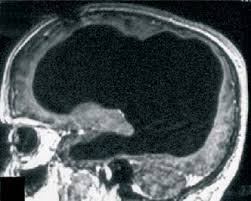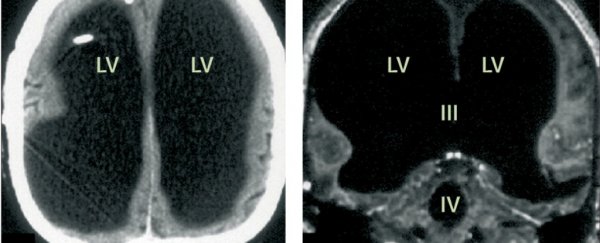We might think we know the human body pretty well by now, but scientists are still discovering incredible individuals who are defying all odds by living out their lives with crucial parts missing, added, or tweaked in the most extraordinary ways.
From those with almost superhuman abilities, to others living without the organs we hold most dear, here are five of the most remarkable humans known to medicine.
1. The woman with the missing cerebellum
Half of your neurons are located in your brain's cerebellum, but you could actually live without one and not even know it.
A 24-year-old woman was living a pretty normal life in China before she visited the doctor complaining nausea and dizziness. Her first ever CAT scan revealed a complete lack of a cerebellum – a region of the brain responsible for balance, voluntary movement, and the ability to learn motor skills and some speech.
Instead, the patient just had a gaping hole.
Researchers are still not sure how the woman has survived all these years without her cerebellum, but suggest that she must have lost it at a young age when other parts of the brain could compensate for its decline.
In the absence of a cerebellum, the woman appears to have been using other parts of her brain instead.
2. The man with only 10 percent of his brain
In 2007, doctors found a French patient who was missing around 90 percent of his brain. Below is the scan to show you just how impressive this is:
 Feuillet et al./The Lancet
Feuillet et al./The Lancet
The Frenchman was 44 years old at the time his case study was first published in The Lancet, and he was living a relatively normal life - he had no idea that a huge part of him was missing.
He had a job, was married, and had children. The only sign that something was wrong was his slightly reduced IQ.
It remains a mystery why the man experiences so few symptoms, but researchers have suggested that his neurons deteriorated gradually due to fluid build-up on the brain, and in the meantime, the few cells that were left seem to have been able to pick up most of the slack.
His case is now causing scientists to rethink our idea of consciousness, because if a man with only 10 percent of a brain can be conscious of his own existence, it suggests that consciousness isn't physically located in any one place in the brain.
Back in 2014, Stan Larkin was the first patient in Michigan discharged with a portable, artificial heart device, known as Syncardia.
Having been diagnosed as a teenager with familial cardiomyopathy, Larkin desperately needed a heart transplant, but after years on the waiting list, doctors finally decided he'd be better off having no heart at all than one that was continuously failing.
So Larkin had his heart removed and was fitted with Syncardia.
The 25-year-old lived with the device for 555 days while he waited for a transplant. The 6-kg machine was fitted into a backpack and pumped blood around the body 24/7. He continued playing basketball until he received his new donor heart in May this year.
Can you imagine what being able to see 99 million extra colours would look like?
For 25 years, scientists have been searching for a woman who might have four working cone cells - a type of individual they call a tetrachromat. Two years ago, they finally found her in northern England, and discovered that she had the ability to sense all-new colours through her extra cone cell.
Identified as only cDa29, researchers estimate that she can see 100 million colours - 99 million more than the rest of us - and are now studying her vision to better understand how tetrachromats might be born.
While scientists think there are actually a whole lot of lots of people out there with four cone cells - colourblind fathers are thought to pass on an extra cone cell to their daughters - the science is still in its infancy. And because most true tetrachromats never need to use their special vision, they likely don't even know they have it.
Last year, we reported on the case of a 23-year-old man with persistent déjà vu. Instead of that mild feeling that you've been there or done that before, this patient felt trapped in a time loop. Everything he watched on TV, heard on the radio, or read in magazines, he felt like he'd already experienced.
This phenomenon was thought to occur only in those with temporal lobe epilepsy, but the man's scans and tests all came back clear - his brain looks totally healthy.
Doctors are still stumped as to why he experiences these episodes, and are even more confused about what causes his déjà vu.
They're now investigating the link between déjà vu and certain psychological disorders, as well as trying to figure out whether more creative people are likely to experience the feeling of "Been there, done that."
If you're feeling pretty unremarkable right now, with your three cone cells and fully intact brain, don't worry, your body is weird in its own way too. It turns out we all have our own little quirks that prove just how weird (and non-essential) some body parts really are.
Check out the video below by Vox to find out how you can see the effects of evolution, just by looking at your arms:

